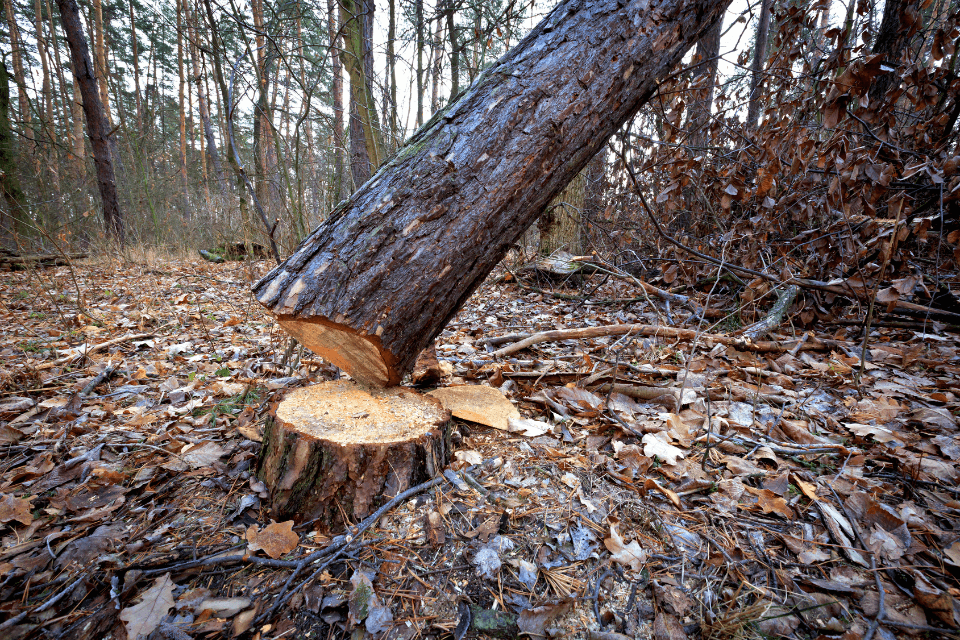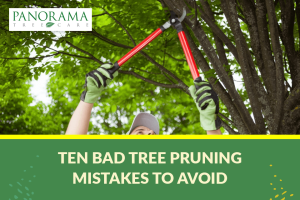Trees are the lifeline of our very existence. They provide oxygen and shade and beautify our surroundings. However, there are instances when trees pose a threat to humans and their properties. In such cases, it’s best to have them removed by professional tree pruning experts.
But what if you decide to do it yourself? Tree cutting can be safe and straightforward if done correctly, but it can also result in injuries, property damage, or worse. This blog will discuss some common tree cutting mistakes you should avoid to ensure that the process remains safe and successful.
Common Mistakes Made While Cutting Trees
Not Wearing Proper Safety Gear
One of the most important things to do when cutting trees is to wear the right tree cutting safety gear. This includes a hard hat, eye protection, gloves, and sturdy footwear with good treads. This protective gear will help prevent injuries from falling branches, sawdust, or other hazards that the process entails.
Not Planning for Safety
Never do this when cutting down a tree. Cutting down a tree requires planning and preparation. Before you begin, make sure you have a clear and safe path for the tree to fall. Keep a safe distance from power lines, buildings, and other structures. It’s also important to have an escape route if the tree falls in an unexpected direction.
Having the Right Tools
Using the wrong tools or incorrect techniques can make the tree-cutting process more complicated and hazardous. Make sure you have the right tools, including a chainsaw, handsaw, wedges, and safety equipment. If you are not familiar with using these tools, it’s best to hire a tampa tree services like us.
Cutting Trees in the Wrong Season
Cutting down trees at the wrong time of the year can be detrimental to the trees’ health. The best time to cut down a tree is during the dormant season, which is usually in late fall or early winter when the trees are not actively growing. Cutting trees during their growing season (spring and summer) can cause unnecessary stress and damage to the tree.
Not Making Proper Cuts
Among the major tree cutting mistakes, cutting trees the wrong way is one. It can cause the tree to fall suddenly and unpredictably, resulting in injuries or property damage. The safest way to cut a tree is by creating a notch on the side of the tree where you want it to fall.
Then, make a horizontal cut just above the notch, followed by another cut from the opposite side of the tree. This creates a hinge and allows the tree to fall in a controlled direction.
Not Removing or Pruning Branches
Before cutting the tree down, it’s essential to remove branches that could obstruct the fall path. This process is known as “limbing.” Professionals recommend that you cut the branches starting from the bottom of the tree and working your way up. Also, if you plan to keep the tree stump as a decorative feature or for re-growth, be sure to prune the remaining branches before cutting the tree down.
Rushing the Process
Finally, cutting down trees requires patience and attention to detail. Do not rush through the process. It can lead to accidents and mistakes. Take your time and follow the appropriate steps, including assessing the tree and its surroundings, creating a plan, preparing the equipment, wearing the right protective gear, and cutting the tree down safely and in a controlled manner.
Some FAQs
What tools should I use when cutting a tree?
When it comes to felling a tree, the right tools can make a significant difference in terms of safety and efficiency. The most commonly used tools for cutting down a tree are chainsaws and axes. Chainsaws are typically the tool of choice for the initial cuts due to their speed and power.
However, in situations where the tree is small or has a limited number of branches, an axe may be a better option. Other essential tools for cutting a tree include a wedge and a sledgehammer, which can be used to guide the tree’s direction as it falls and to split the trunk into manageable pieces.
How can I ensure I am cutting the tree correctly?
Cutting down a tree correctly requires a careful and deliberate approach. Start by assessing the tree’s height, size, and weight. Position yourself at a safe distance from the tree, taking into account the direction in which the tree is likely to fall. Plan your cuts carefully, starting with a horizontal cut on the side of the tree where you want it to fall.
Then, make a diagonal cut above the first cut to create a hinge. Once the hinge is in place, make a final cut from the tree’s opposite side to lay it in the desired direction. Be sure to wear protective gear, such as a hard hat, ear and eye protection, and sturdy work boots.
What is the best way to assess the risk before cutting down a tree?
Before felling a tree, it’s crucial to assess the risks involved and plan accordingly, to avoid tree cutting mistakes and hazards. Look for any damaged or dead branches that may affect the tree’s stability and remove them before starting the cut.
Identify obstacles, such as nearby structures or power lines, and plan your felling path accordingly. If the tree is located on a slope, take extra precautions to ensure it falls in the desired direction.
What is the best way to plan a tree felling path?
Planning the tree felling path is essential for safety and efficiency. Start by identifying the tree’s height, weight, and size, and the direction in which it’s likely to fall. From there, look for obstacles, such as buildings, power lines, or other trees, and plan a route that avoids them. Use your tools, such as wedges and ropes, to control the tree’s direction as it falls, and have a clear plan for removing the tree’s branches and trunk once it’s safely on the ground.
What should I do if I accidentally hit a power line when cutting down a tree?
Accidentally hitting a power line when cutting down a tree can be extremely dangerous and potentially deadly. If you accidentally hit a power line, stay calm and do not touch anything, including the tree, the equipment, or the ground around you.
Alert others in the area and call emergency services immediately. Do not attempt to move the tree or the equipment, as the power line might be active. Wait for emergency services to arrive and follow their instructions carefully.
Cutting trees can be a hazardous and complicated process if not done correctly. To avoid accidents and ensure a successful outcome, it’s essential to avoid common tree cutting mistakes such as not wearing proper safety gear, not planning for safety, not having the right tools, cutting trees in the wrong season, not making accurate cuts, not removing or pruning branches, and rushing the process. If you are unsure about the process or have concerns about safety, it’s best to hire professional tree services for a safer and more efficient experience.







